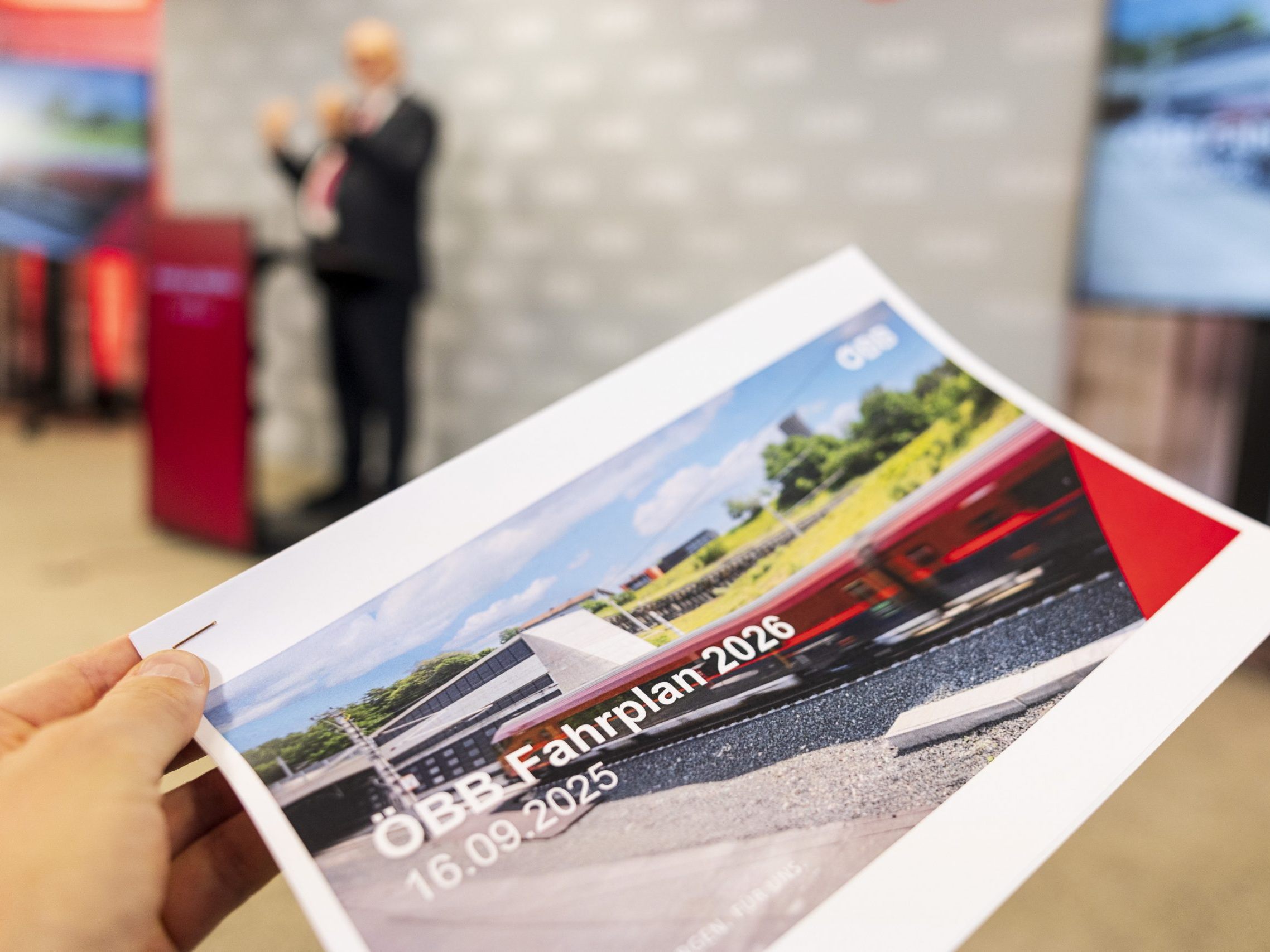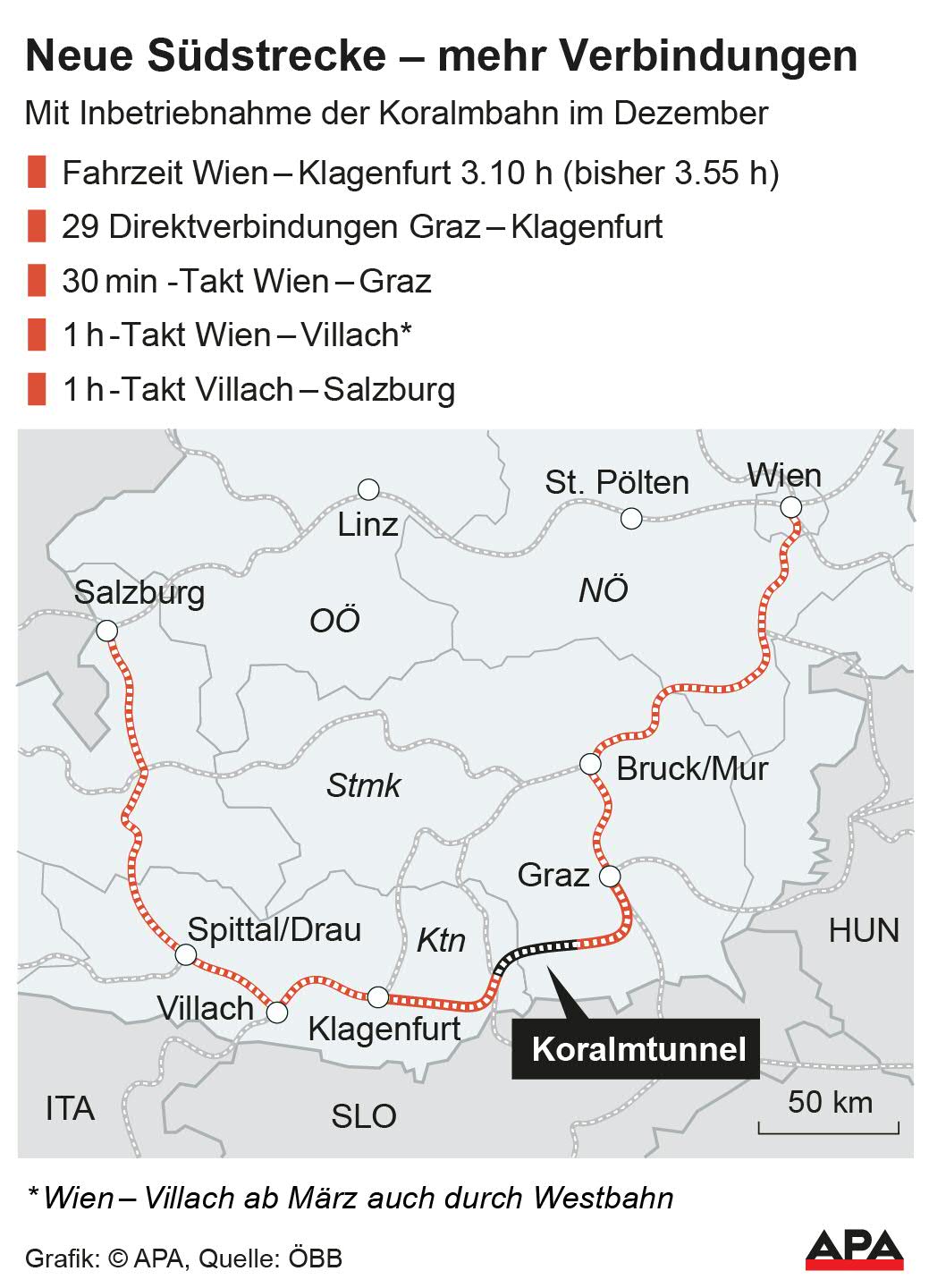New ÖBB Timetable: Changes Starting in December

Despite immense budgetary pressure, disputes over some stops of the fastest RJX trains, and recently postponed other projects, the ÖBB has positive news, which can be considered historic for southern Austria. With the commissioning of the Koralmbahn, a completely new railway line is going into operation in Austria for the first time in decades. The only thing missing for the entirely new southern railway is the Semmering tunnel, which is currently under construction.
New ÖBB Timetable in the Context of Historic Koralmtunnel Opening
With the new timetable, there will also be significantly more frequent hourly connections from Graz, Klagenfurt, and Villach via the Tauernbahn with Spittal/Millstättersee, Mallnitz, and Bad Gastein to Salzburg. Graz and Salzburg will have seven direct connections, Villach and Salzburg 20. Five times a day, you can also travel from Graz to Munich in Germany via this route.
Since the new Koralmbahn bypasses the previous inner-Alpine railway network, new connections to Linz, Graz, Maribor in Slovenia, Klagenfurt, Salzburg, and Innsbruck are being established via Leoben and Bruck an der Mur. This is done with "Interregio" trains, partly on an hourly and partly on a two-hourly schedule. On most of the new lines, 27 new barrier-free "Interregio" trainsets will be used, equipped with a first-class area and a snack zone with trolley service.
Matthä: Train from Vienna Now Better Than Car on Southern Route
The long-distance service is increasing by around 30 percent overall, according to ÖBB CEO Andreas Matthä in front of journalists. "Between Vienna and Graz, we practically offer a half-hourly service for our passengers. We have the largest and best service schedule," said the ÖBB CEO. "Now the train is clearly at an advantage over the car on the southern route." He also emphasized the value in terms of climate-friendly mobility and the increase in the number of connections - currently, there are ten from Vienna to Klagenfurt, so there is more than a doubling.
However, the ÖBB CEO left another important point for passengers open, namely the extent of the certain ticket price increase. While he spoke of a price increase in percentage terms at the press conference, where "a four will definitely be in front," ÖBB spokespersons did not want to comment more specifically on APA inquiries, not even confirming their CEO's statement upon request. It was said that they would "move around the level of inflation." Which inflation (average) value will be used was also not answered upon inquiry. In the metal industry, an annual inflation rate of 2.8 percent is currently being used, with a recent increase to 4.1 percent in August alone. Matthä preferred to promote the Sparschiene tickets between Vienna, Graz, and Klagenfurt.
29 Instead of Eight Times Daily from Graz to Klagenfurt
29 connections per day are announced from Graz to Klagenfurt - instead of the previous eight by bus. The travel time from Vienna to Klagenfurt is reduced by three-quarters of an hour (3:10 instead of 3:55 hours). Faster direct connections to Italy - such as with the RJX to Trieste and Venice - enhance the international offering. Venice can be reached from Vienna in 7:10 instead of the current 7:40 hours, Trieste in 6:38 instead of 9:18 hours. New connections to the Czech Republic and Poland are also announced.

Closure of railway lines in Bavaria "very painful" for ÖBB
For longer travel times, cancellations, and diversions, complete closures of Deutsche Bahn (DB) towards nearby Austria will cause concern in the coming years, as they urgently need to renovate their dilapidated rail network. Here, potential annoyances will accompany domestic travelers for years to come. This applies to the Deutsche Eck and the route via Passau to Nuremberg. Matthä: "This is painful, but almost without alternatives when you see how much we are currently suffering from the infrastructure restrictions in the German network." This will negatively affect our own punctuality in long-distance traffic.
In the last decades, so little has been done that the problems are now being addressed with general renovations. The traffic between Salzburg and Innsbruck runs via the Deutsche Eck, which will be affected. Important connections go from Vienna via Linz and Passau towards Nuremberg. There will also be closures here.
Planned closures of Deutsche Bahn
In the first half of 2026, the route between Regensburg and Nuremberg will be closed, in the second half between Passau and Regensburg. "There will be longer travel times and diversions," said Matthä on Tuesday. In part, there will be "massive diversions in international long-distance traffic towards Germany."
The Passau-Nuremberg route also represents one of the main international freight routes and will not be available for a year. "We will manage significant diversions through the entire Austrian rail network." This applies especially to the second half of 2026.
In the first half of 2027, the Freilassing-Rosenheim route will be closed for several months. Additionally, from the current planning perspective, there will be a closure between Rosenheim and Munich in the first half of 2028. It must be understandable that this will have "significant impacts" on local traffic. Matthä announced that the restrictions for traffic in the border regions will be communicated in separate regional timetable information.
(APA/Red.)
This article has been automatically translated, read the original article here.





